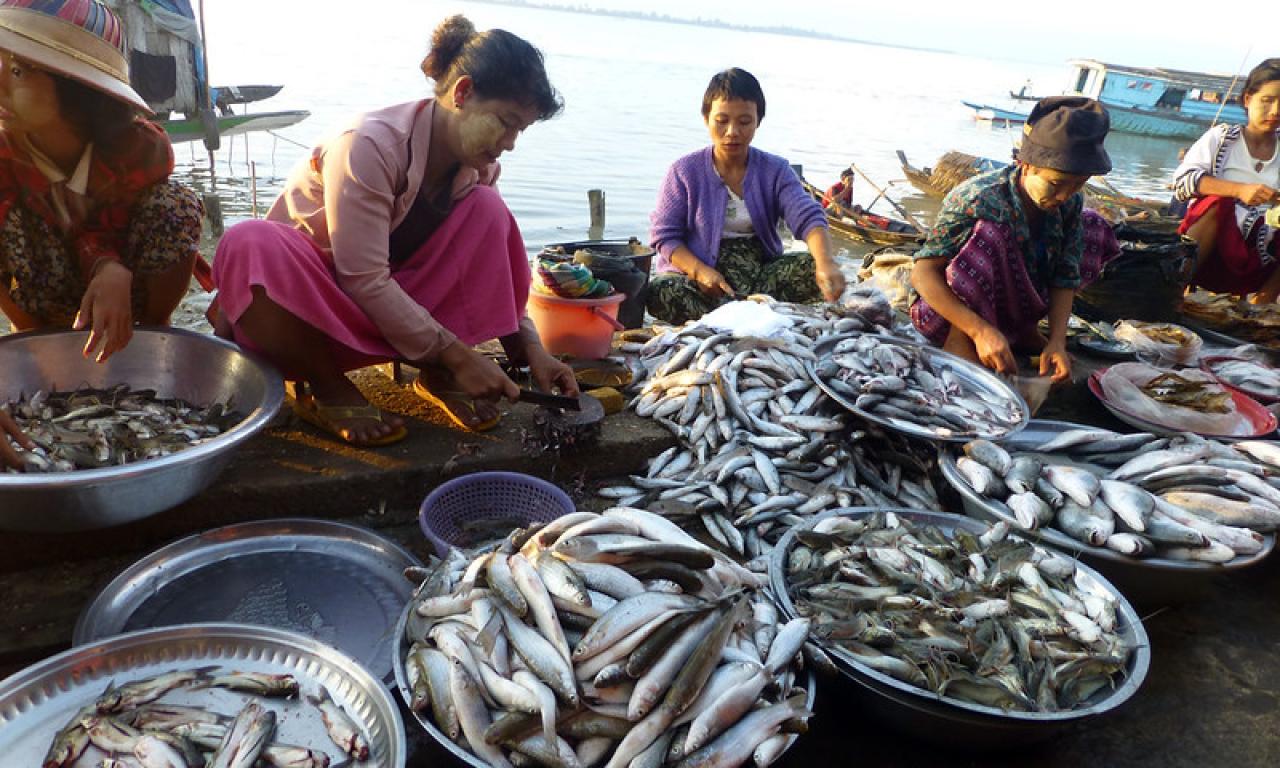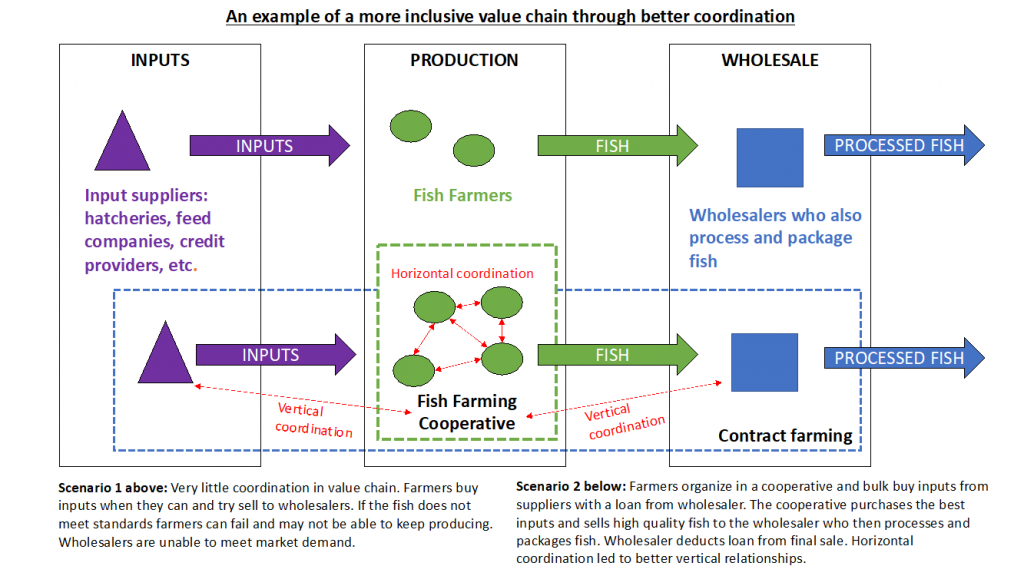
It is not always clear whether new trends in commercial growth in aquaculture are inclusive of the poor and whether this contributes to reducing poverty and inequality. Integrating smallholders and poor actors into aquaculture value chains using inclusive business models are touted as more sustainable and ethical ways of doing business and trade. Such models are seen around the world, such as in sharecropping arrangements in rice fields in Asia, or contract farming models with smallholder coffee farmers in Latin America.
A review paper by several scientists from WorldFish, University of Stirling and other partners looks at 36 cases of inclusive business models in aquaculture value chains in low-income countries. These models are broadly categorized into seven types: contract farming, microfranchising, joint ventures, sharecropping and tenant farming, farming cooperatives, certification and public-private partnerships.
The paper uses a value chain approach to assess the typical barriers faced by poor actors in these chains and how an inclusive business model attempts to overcome these barriers. Business models operate in value chains and market systems that are multi-functional and which have various arrangements that comprise of exchanges in goods and services and which depend on rules shaped by different players. This means that assessing the relationships, communication and information flows between actors is very important. Who derives benefits from participating in a value chain is equally important. Much of this will have to do with who holds power and influence in the sector.
Inclusive relationships should offer various incentives that will benefit all parties’ position and performance in the chain. For example, in a contract farming scenario, large wholesalers can offer smallholder farmers various inputs (e.g. feed and seed) on credit and then buy back the harvest at the end of the farming cycle. Smallholder farmers get access to high quality inputs which increases their yields and they can pay back the credit with the sale of the harvest to the wholesaler who has more fish to sell (see graph).

The paper, published in Reviews in Aquaculture, argues that these arrangements should be inclusive of especially poor and marginalised people by offering economic and social upgrading opportunities. The first is made up of mechanisms that enable greater economic performance (e.g. new products and improved processes); whilst the second is made up of improvements in the social conditions of the arrangement (i.e. livelihood or labour conditions). This is achieved through establishing relationships in the same node (i.e. arrangement between farmers) or with actors in different nodes (i.e. arrangements between farmers and wholesalers). This is called horizontal and vertical coordination, respectively.
The results of the review reveal that there are few examples of models in aquaculture in low-income countries. All the models were implemented in various ways and no one model was better than the other. There was also much overlap between the models. For example, fish farming cooperatives in Thailand and Vietnam improved the governance of their organisations by improving the decision-making capacities and knowledge-sharing between farmers. This allowed the cooperatives to negotiate better contracts with wholesalers and traders through various contract farming models (see graph as an example).
In most cases, there were economic upgrading incentives within the arrangements. Few of the models, however, described any social upgrading in the form of improved labour and working conditions of especially poor people taking part in the model. In the absence of social licence, worker’s rights frameworks and other mechanisms that can improve the capacities of farmers and other actors, some of the models broke down. There is thus an implied dark side to these models, where inclusiveness is not assured, and where actors can become trapped in contracts that are exploitative or find it difficult to comply with the conditions of a contract. This can leave people in the same or even worse economic conditions then they were in before.
Inclusive business models will play a larger role in how businesses, NGOs and governments roll-out aquaculture in low-income countries. New trends in changing aid structures (i.e. ‘trade-not-aid’) and changing roles for public and private actors in international development, means that such approaches are seen as a way to make markets work for the poor. How this plays out will largely depend on who is implementing these models and how. This paper allows us to see what types of models exist in aquaculture. How the models are tailored to aquaculture or how inclusive these models really are, requires more research. One thing that is clear though, is that to reach the objectives of the United Nations’ Sustainable Development Goals, aquaculture value chains will have to be more inclusive of poor people.